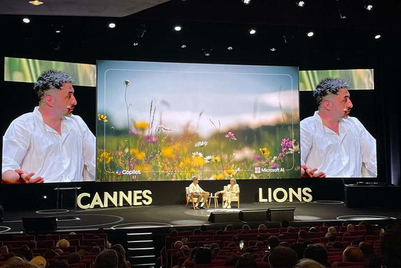
A vision statement needs to be true to your brand, not true to your products. Imagine if Apple’s Steve Jobs had created his company vision in the ’80s based on his product portfolio.
There’d have been no room for expansion into home-entertainment. iPod probably wouldn’t be around. Instead, the vision Jobs created more than 20 years ago is as fresh and relevant today as it was then: ‘Man is the creator of change in this world. As such, he should be above systems and structures, and not subordinate to them.’
And that’s what Apple’s philosophy is all about. The primacy of people in every aspect of the business: communications, products and services. So here are three tips to help you make a vision statement that means something.
First, make it smashable. The 1915 brief for designing the Coca-Cola bottle is my inspiration for this principle. The design had to be so coherent that, should a bottle be smashed into any number of those pieces, any of those shards should be recognisably from a Coca-Cola bottle.
The Smash Your Brand test works for any brand and for any device that reflects the brand. The principal is simple. Remove the logo and you should be able to recognise the brand by colour, shape, graphics, sound. Consider the blue of a Tiffany’s box, the Absolut vodka bottle, the United Colors of Benetton picture style, or the rumble of a Harley Davidson.
A vision statement needs to be smashable too. It needs to be so distinct that you can remove any references to the brand name and still instantly recognise who’s behind it.
Second tip: stamp the statement with the indelible ink of your values. Richard Branson’s vision statement for any of the Virgin companies would leave you in doubt as to whose it is, even minus the brand name. But this is not only a matter of semantics. The Virgin tone, as well as the words, in every communication channel communicates the brand’s personality and values.
And that leads me to the third and perhaps most essential ingredient in a powerful vision statement. It should be so solid that it gives a mandate for capitalising on all creative opportunities by going to the very edge of brand communication while maintaining the brand’s core values. This edge is up for grabs and reveals different opportunities to different brands. The major sponsor of the world’s largest ferris wheel, the London Eye, is British Airways. When the construction was encountering complications during the erection of the Eye, Virgin seized the opportunity to comment on the difficulties of getting the structure upright. Virgin decked an airship in the distinctive red paintwork and flew it over the London Eye with the message: ‘BA can’t get it up!’
If your vision statement fails to be smashable, distinctive and enabling, it’s not worth bothering with. So, is your brand’s vision statement bold? Is it smashable and distinctive? Does it invite creativity to go to its limits? The more of these boxes you can tick the higher the chance is that you’re onto something powerful. But if you’re not able to tick any of them, and most companies would fall into this category, go back to the drawing board.
Martin Lindstrom is the author of Brand Sense


.jpg&h=334&w=500&q=100&v=20250320&c=1)



.png&h=334&w=500&q=100&v=20250320&c=1)



.png&h=334&w=500&q=100&v=20250320&c=1)

.png&h=268&w=401&q=100&v=20250320&c=1)
.png&h=268&w=401&q=100&v=20250320&c=1)

